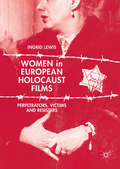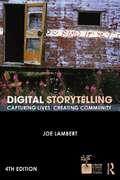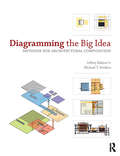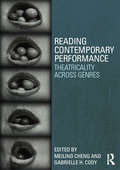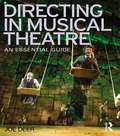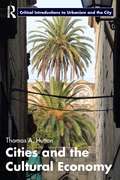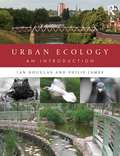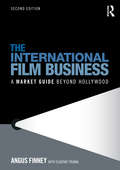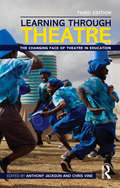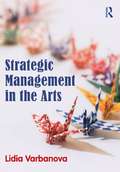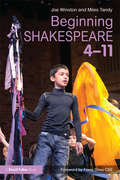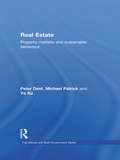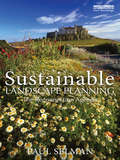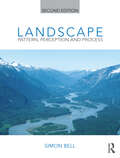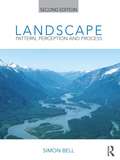- Table View
- List View
Women in European Holocaust Films: Perpetrators, Victims and Resisters
by Ingrid LewisThis book considers how women’s experiences have been treated in films dealing with Nazi persecution. Focusing on fiction films made in Europe between 1945 and the present, this study explores dominant discourses on and cinematic representation of women as perpetrators, victims and resisters. Ingrid Lewis contends that European Holocaust Cinema underwent a rich and complex trajectory of change with regard to the representation of women. This change both reflects and responds to key socio-cultural developments in the intervening decades as well as to new directions in cinema, historical research and politics of remembrance. The book will appeal to international scholars, students and educators within the fields of Holocaust Studies, Film Studies, European Cinema and Women’s Studies.
Digital Storytelling: Capturing Lives, Creating Community
by Joe LambertListen deeply. Tell stories. This is the mantra of the Center for Digital Storytelling (CDS) in Berkeley California, which, since 1998 has worked with nearly 1,000 organizations around the world and trained more than 15,000 people in the art of digital storytelling. In this revised and updated edition of the CDS's popular guide to digital storytelling, co-founder Joe Lambert details the history and methods of digital storytelling practices. Using a "7 Steps" approach, Lambert helps storytellers identify the fundamentals of dynamic digital storytelling--from seeing the story, assembling it, and sharing it. As in the last edition, readers of the fourth edition will also find new explorations of the applications of digital storytelling and updated appendices that provide resources for budding digital storytellers, including information about past and present CDS-affiliated projects and place-based storytelling, a narrative-based approach to understanding experience and landscape. A companion website further brings the entire storytelling process to life. Over the years, the CDS's work has transformed the way that community activists, educators, health and human services agencies, business professionals, and artists think about story, media, culture, and the power of personal voice in creating change. For those who yearn to tell multimedia stories, Digital Storytelling is the place to begin.
Digital Storytelling: Capturing Lives, Creating Community
by Joe LambertListen deeply. Tell stories. This is the mantra of the Center for Digital Storytelling (CDS) in Berkeley California, which, since 1998 has worked with nearly 1,000 organizations around the world and trained more than 15,000 people in the art of digital storytelling. In this revised and updated edition of the CDS's popular guide to digital storytelling, co-founder Joe Lambert details the history and methods of digital storytelling practices. Using a "7 Steps" approach, Lambert helps storytellers identify the fundamentals of dynamic digital storytelling--from seeing the story, assembling it, and sharing it. As in the last edition, readers of the fourth edition will also find new explorations of the applications of digital storytelling and updated appendices that provide resources for budding digital storytellers, including information about past and present CDS-affiliated projects and place-based storytelling, a narrative-based approach to understanding experience and landscape. A companion website further brings the entire storytelling process to life. Over the years, the CDS's work has transformed the way that community activists, educators, health and human services agencies, business professionals, and artists think about story, media, culture, and the power of personal voice in creating change. For those who yearn to tell multimedia stories, Digital Storytelling is the place to begin.
Diagramming the Big Idea: Methods for Architectural Composition
by Jeffrey Balmer Michael T. SwisherAs a beginning design student, you need to learn to think like a designer, to visualize ideas and concepts, as well as objects. In Diagramming the Big Idea, Jeffrey Balmer and Michael T. Swisher illustrate how you can create and use diagrams to clarify your understanding of both particular projects and organizing principles and ideas. With accessible, step-by-step exercises that interweave diagrams, drawings and virtual models, the authors clearly show you how to compose meaningful and useful diagrams. As you follow the development of the four project groups drawn from the authors’ teaching, you will become familiar with architectural composition concepts such as proportion, site, form, hierarchy and spatial construction. In addition, description and demonstration essays extend concepts to show you more examples of the methods used in the projects. Whether preparing for a desk critique, or any time when a fundamental insight can help to resolve a design problem, this book is your essential studio resource.
Diagramming the Big Idea: Methods for Architectural Composition
by Jeffrey Balmer Michael T. SwisherAs a beginning design student, you need to learn to think like a designer, to visualize ideas and concepts, as well as objects. In Diagramming the Big Idea, Jeffrey Balmer and Michael T. Swisher illustrate how you can create and use diagrams to clarify your understanding of both particular projects and organizing principles and ideas. With accessible, step-by-step exercises that interweave diagrams, drawings and virtual models, the authors clearly show you how to compose meaningful and useful diagrams. As you follow the development of the four project groups drawn from the authors’ teaching, you will become familiar with architectural composition concepts such as proportion, site, form, hierarchy and spatial construction. In addition, description and demonstration essays extend concepts to show you more examples of the methods used in the projects. Whether preparing for a desk critique, or any time when a fundamental insight can help to resolve a design problem, this book is your essential studio resource.
Reading Contemporary Performance: Theatricality Across Genres
by Gabrielle Cody Meiling ChengAs the nature of contemporary performance continues to expand into new forms, genres and media, it requires an increasingly diverse vocabulary. Reading Contemporary Performance provides students, critics and creators with a rich understanding of the key terms and ideas that are central to any discussion of this evolving theatricality. Specially commissioned entries from a wealth of contributors map out the many and varied ways of discussing performance in all of its forms – from theatrical and site-specific performances to live and New Media art. The book is divided into two sections: Concepts - Key terms and ideas arranged according to the five characteristic elements of performance art: time; space; action; performer; audience. Methodologies and Turning Points - The seminal theories and ways of reading performance, such as postmodernism, epic theatre, feminisms, happenings and animal studies. Case Studies – entries in both sections are accompanied by short studies of specific performances and events, demonstrating creative examples of the ideas and issues in question. Three different introductory essays provide multiple entry points into the discussion of contemporary performance, and cross-references for each entry also allow the plotting of one’s own pathway. Reading Contemporary Performance is an invaluable guide, providing not just a solid set of familiarities, but an exploration and contextualisation of this broad and vital field.
Directing in Musical Theatre: An Essential Guide
by Joe DeerThis comprehensive guide, from the author of Acting in Musical Theatre, will equip aspiring directors with all of the skills that they will need in order to guide a production from beginning to end. From the very first conception and collaborations with crew and cast, through rehearsals and technical production all the way to the final performance, Joe Deer covers the full range. Deer’s accessible and compellingly practical approach uses proven, repeatable methods for addressing all aspects of a production. The focus at every stage is on working with others, using insights from experienced, successful directors to tackle common problems and devise solutions. Each section uses the same structure, to stimulate creative thinking: ? Timetables: detailed instructions on what to do and when, to provide a flexible organization template Prompts and Investigations: addressing conceptual questions about style, characterization and design Skills Workshops: Exercises and ‘how-to’ guides to essential skills Essential Forms and Formats: Including staging notation, script annotation and rehearsal checklists Case Studies: Well-known productions show how to apply each chapter’s ideas Directing in Musical Theatre not only provides all of the essential skills, but explains when and how to put them to use; how to think like a director.
Directing in Musical Theatre: An Essential Guide
by Joe DeerThis comprehensive guide, from the author of Acting in Musical Theatre, will equip aspiring directors with all of the skills that they will need in order to guide a production from beginning to end. From the very first conception and collaborations with crew and cast, through rehearsals and technical production all the way to the final performance, Joe Deer covers the full range. Deer’s accessible and compellingly practical approach uses proven, repeatable methods for addressing all aspects of a production. The focus at every stage is on working with others, using insights from experienced, successful directors to tackle common problems and devise solutions. Each section uses the same structure, to stimulate creative thinking: ? Timetables: detailed instructions on what to do and when, to provide a flexible organization template Prompts and Investigations: addressing conceptual questions about style, characterization and design Skills Workshops: Exercises and ‘how-to’ guides to essential skills Essential Forms and Formats: Including staging notation, script annotation and rehearsal checklists Case Studies: Well-known productions show how to apply each chapter’s ideas Directing in Musical Theatre not only provides all of the essential skills, but explains when and how to put them to use; how to think like a director.
Cities and the Cultural Economy (Routledge Critical Introductions to Urbanism and the City)
by Thomas A. HuttonThe cultural economy forms a leading trajectory of urban development, and has emerged as a key facet of globalizing cities. Cultural industries include new media, digital arts, music and film, and the design industries and professions, as well as allied consumption and spectacle in the city. The cultural economy now represents the third-largest sector in many metropolitan cities of the West including London, Berlin, New York, San Francisco, and Melbourne, and is increasingly influential in the development of East Asian cities (Tokyo, Shanghai, Hong Kong and Singapore), as well as the mega-cities of the Global South (e.g. Mumbai, Capetown, and São Paulo). Cities and the Cultural Economy provides a critical integration of the burgeoning research and policy literatures in one of the most prominent sub-fields of contemporary urban studies. Policies for cultural economy are increasingly evident within planning, development and place-marketing programs, requiring large resource commitments, but producing – on the evidence – highly uneven results. Accordingly the volume includes a critical review of how the new cultural economy is reshaping urban labour, housing and property markets, contributing to gentrification and to ‘precarious employment’ formation, as well as to broadly favorable outcomes, such as community regeneration and urban vitality. The volume acknowledges the important growth dynamics and sustainability of key creative industries. Written primarily as a text for upper-level undergraduate and Masters students in urban, economic and social geography; sociology; cultural studies; and planning, this provocative and compelling text will also be of interest to those studying urban land economics, architecture, landscape architecture and the built environment.
Urban Ecology: An Introduction
by Ian Douglas Philip JamesUrban Ecology: An Introduction seeks to open the reader’s mind and eyes to the way in which nature permeates everyday urban living, and how it has to be understood, cared for, and managed in order to make our towns and cities healthier places to visit and in which to live and work. The authors examine how nature can improve our physical and mental health, the air we breathe and the waters we use, as well as boosting our enjoyment of parks and gardens. Urban Ecology sets out the science that underlies the changing natural scene and the tools used to ensure that cities become both capable of adapting to climate change and more beautiful and resilient. The book begins with a discussion of the nature of urban places and the role of nature in towns and cities. Part 1 looks at the context and content of urban ecology, its relationship to other foci of interest within ecology and other environmental sciences, and the character of city landscapes and ecosystems. In Part 2 the authors set out the physical and chemical components of urban ecosystems and ecological processes, including urban weather and climate, urban geomorphology and soils, urban hydrology and urban biogeochemical cycles. In Part 3 urban habitats, urban flora and fauna, and the effects of, deliberate and inadvertent human action on urban biota are examined. Part 4 contains an exploration of the identification and assessment of ecosystem services in urban areas, emphasising economic evaluation, the importance of urban nature for human health and well-being, and restoration ecology and creative conservation. Finally, in Part 5 the tasks for urban ecologists in optimising and sustaining urban ecosystems, providing for nature in cities, adapting to climate change and in developing the urban future in a more sustainable manner are set out. Within the 16 chapters of the book – in which examples from around the world are drawn upon - the authors explore current practice and future alternatives, set out procedures for ecological assessment and evaluation, suggest student activities and discussion topics, provide recommended reading and an extensive bibliography. The book contains more than 150 tables and over 150 photographs and diagrams.
Urban Ecology: An Introduction
by Ian Douglas Philip JamesUrban Ecology: An Introduction seeks to open the reader’s mind and eyes to the way in which nature permeates everyday urban living, and how it has to be understood, cared for, and managed in order to make our towns and cities healthier places to visit and in which to live and work. The authors examine how nature can improve our physical and mental health, the air we breathe and the waters we use, as well as boosting our enjoyment of parks and gardens. Urban Ecology sets out the science that underlies the changing natural scene and the tools used to ensure that cities become both capable of adapting to climate change and more beautiful and resilient. The book begins with a discussion of the nature of urban places and the role of nature in towns and cities. Part 1 looks at the context and content of urban ecology, its relationship to other foci of interest within ecology and other environmental sciences, and the character of city landscapes and ecosystems. In Part 2 the authors set out the physical and chemical components of urban ecosystems and ecological processes, including urban weather and climate, urban geomorphology and soils, urban hydrology and urban biogeochemical cycles. In Part 3 urban habitats, urban flora and fauna, and the effects of, deliberate and inadvertent human action on urban biota are examined. Part 4 contains an exploration of the identification and assessment of ecosystem services in urban areas, emphasising economic evaluation, the importance of urban nature for human health and well-being, and restoration ecology and creative conservation. Finally, in Part 5 the tasks for urban ecologists in optimising and sustaining urban ecosystems, providing for nature in cities, adapting to climate change and in developing the urban future in a more sustainable manner are set out. Within the 16 chapters of the book – in which examples from around the world are drawn upon - the authors explore current practice and future alternatives, set out procedures for ecological assessment and evaluation, suggest student activities and discussion topics, provide recommended reading and an extensive bibliography. The book contains more than 150 tables and over 150 photographs and diagrams.
The International Film Business: A Market Guide Beyond Hollywood
by Angus FinneyThe International Film Business examines the independent film sector as a business, and addresses the specific skills and knowledge it demands. It describes both the present state of the industry, the significant digital and social media developments that are continuing to take place, and what changes these might effect. The International Film Business: describes and analyses the present structure of the film industry as a business, with a specific focus on the film value chain discusses and analyses current digital technology and how it potentially may change the structure and opportunities offered by the industry in the future provides information and advice on the different business and management skills and strategies includes case studies on a variety of films including The Guard (2011), The King’s Speech (2010), The Best Exotic Marigold Hotel (2012), Cloverfield (2008), Pobby & Dingan (aka Opal Dream, 2005), Confessions of a Dangerous Mind (2002), The Reckoning (2002)and The Mother (2003), and company case studies on Pixar, Renaissance, Redbus and Zentropa. Further case studies on films that failed to go into production include Neil LaBute’s Vapor and Terry Gilliam’s Good Omens. Taking an entrepreneurial perspective on what future opportunities will be available to prepared and informed students and emerging practitioners, this text includes case studies that take students through the successes and failures of a variety of real film companies and projects and features exclusive interviews with leading practitioners in all sectors of the industry, from production to exhibition.
The International Film Business: A Market Guide Beyond Hollywood
by Angus FinneyThe International Film Business examines the independent film sector as a business, and addresses the specific skills and knowledge it demands. It describes both the present state of the industry, the significant digital and social media developments that are continuing to take place, and what changes these might effect. The International Film Business: describes and analyses the present structure of the film industry as a business, with a specific focus on the film value chain discusses and analyses current digital technology and how it potentially may change the structure and opportunities offered by the industry in the future provides information and advice on the different business and management skills and strategies includes case studies on a variety of films including The Guard (2011), The King’s Speech (2010), The Best Exotic Marigold Hotel (2012), Cloverfield (2008), Pobby & Dingan (aka Opal Dream, 2005), Confessions of a Dangerous Mind (2002), The Reckoning (2002)and The Mother (2003), and company case studies on Pixar, Renaissance, Redbus and Zentropa. Further case studies on films that failed to go into production include Neil LaBute’s Vapor and Terry Gilliam’s Good Omens. Taking an entrepreneurial perspective on what future opportunities will be available to prepared and informed students and emerging practitioners, this text includes case studies that take students through the successes and failures of a variety of real film companies and projects and features exclusive interviews with leading practitioners in all sectors of the industry, from production to exhibition.
Learning Through Theatre: The Changing Face of Theatre in Education
by Anthony Jackson Chris VineIn the two decades since the publication of the second edition, Learning Through Theatre has further established itself as an indispensable resource for scholars, practitioners and educators interested in the complex interrelations between teaching and learning, the performing arts, and society at large. Theatre in Education (TIE) has consistently been at the cutting edge of the ever-growing field of Applied Theatre; this comprehensively revised new edition makes an international case for why, and how, it will continue to shape ways in which the participatory arts contribute to the learning of young people (and increasingly, adults) in the 21st century. Drawing on the experiences and insights of theorists and practitioners from across the world, Learning Through Theatre shows how theatre can, and does, promote: participatory engagement; the use of innovative theatrical form; work with young people and adults in a range of educational settings; and social and personal change. Now transatlantically edited by Anthony Jackson and Chris Vine, Learning Through Theatre offers exhilarating new reflections on the book’s original aim: to define, describe and debate the salient features, and wider political context, of one of the most important – and radical – developments in contemporary theatre.
Strategic Management in the Arts
by Lidia VarbanovaStrategic Management in the Arts looks at the unique characteristics of organisations in the arts and culture sector and shows readers how to tailor a strategic plan to help these diverse organizations meet their objectives. Strategic management is an essential element that drives an organisation’s success, yet many cultural organizations have yet to apply strategic thinking and entrepreneurial actions within the management function. Varbanova reviews the existing theories and models of strategic management and then relates these specifically to cultural organisations. Also included are sections on entrepreneurship and innovations in the arts, considering the concept of a ‘learning organisation’ – an organisation able to adapt its strategy within a constantly changing, complex environment. The book is structured to walk the reader through each element of the strategic plan systematically. With a fresh approach, key questions, examples, international cases to connect theory with practice and suggestions for further reading, this book is designed to accompany classes on strategic planning, cultural management or arts management.
Strategic Management in the Arts
by Lidia VarbanovaStrategic Management in the Arts looks at the unique characteristics of organisations in the arts and culture sector and shows readers how to tailor a strategic plan to help these diverse organizations meet their objectives. Strategic management is an essential element that drives an organisation’s success, yet many cultural organizations have yet to apply strategic thinking and entrepreneurial actions within the management function. Varbanova reviews the existing theories and models of strategic management and then relates these specifically to cultural organisations. Also included are sections on entrepreneurship and innovations in the arts, considering the concept of a ‘learning organisation’ – an organisation able to adapt its strategy within a constantly changing, complex environment. The book is structured to walk the reader through each element of the strategic plan systematically. With a fresh approach, key questions, examples, international cases to connect theory with practice and suggestions for further reading, this book is designed to accompany classes on strategic planning, cultural management or arts management.
Beginning Shakespeare 4-11
by Joe Winston Miles Tandy'This book is clear, approachable, and true. The elegant simplicity of its good guidance is the product of years of practical experience in the classroom. I wholeheartedly commend it to primary school teachers everywhere.' Michael Boyd, Artistic Director of the Royal Shakespeare Company Shakespeare’s plays are widely regarded as the greatest inheritance in English literature and recent years have seen a growing interest in introducing them to children in their primary schools. In this book, the authors bring a blend of clear thinking, playful and inventive practice and straightforward practical advice to bear on teaching Shakespeare in the primary school. Children who encounter Shakespeare early have the opportunity to become comfortable with the plays, their stories, characters and settings, long before they might become intimidated by their associations with exclusivity and ‘high’ culture. They are also given the chance to become familiar with and absorb his powerful and complex language at a stage when they are constantly encountering new vocabulary. To do this most effectively demands a dynamic pedagogy, one which recognises that the plays are best explored and understood through active, physical engagement. Beginning Shakespeare 4-11 offers a sound rationale for teaching Shakespeare in primary schools and shows how to engage children with Shakespeare through story, through the very best of early years practice, and through his rich and sensual language. It also illustrates how engagement with the plays and their language can have a dramatic impact on children’s writing. And because plays are for performing, there is helpful and practical advice on how to develop the work and share it with the whole school, parents and the wider community. This accessible and comprehensive guide is ideal for teacher trainees and practising primary teachers everywhere.
Beginning Shakespeare 4-11
by Joe Winston Miles Tandy'This book is clear, approachable, and true. The elegant simplicity of its good guidance is the product of years of practical experience in the classroom. I wholeheartedly commend it to primary school teachers everywhere.' Michael Boyd, Artistic Director of the Royal Shakespeare Company Shakespeare’s plays are widely regarded as the greatest inheritance in English literature and recent years have seen a growing interest in introducing them to children in their primary schools. In this book, the authors bring a blend of clear thinking, playful and inventive practice and straightforward practical advice to bear on teaching Shakespeare in the primary school. Children who encounter Shakespeare early have the opportunity to become comfortable with the plays, their stories, characters and settings, long before they might become intimidated by their associations with exclusivity and ‘high’ culture. They are also given the chance to become familiar with and absorb his powerful and complex language at a stage when they are constantly encountering new vocabulary. To do this most effectively demands a dynamic pedagogy, one which recognises that the plays are best explored and understood through active, physical engagement. Beginning Shakespeare 4-11 offers a sound rationale for teaching Shakespeare in primary schools and shows how to engage children with Shakespeare through story, through the very best of early years practice, and through his rich and sensual language. It also illustrates how engagement with the plays and their language can have a dramatic impact on children’s writing. And because plays are for performing, there is helpful and practical advice on how to develop the work and share it with the whole school, parents and the wider community. This accessible and comprehensive guide is ideal for teacher trainees and practising primary teachers everywhere.
Real Estate: Property Markets and Sustainable Behaviour
by Peter Dent Michael Patrick Xu YeTraditional studies of the property market have tended to focus solely on commercial and legal issues, but the growing importance of the issue of sustainability means that a different approach is needed. This new textbook provides an overview of property within a market context, examining the complex nature of property rights and issues related to both investors and occupiers. At the same time it assesses property from the perspective of financial, social and environment sustainability. Topics covered range from the characteristics of property and depreciation, to ownership and development through to investments and sustainability reporting. The book concludes with key skills in sustainable knowledge needed by those working in the real estate industry. Written by an author team of experienced property professionals, this essential introductory textbook is well suited for property, planning and architecture students on undergraduate, graduate and conversion courses, as well as those on CPD and training programmes in related areas.
Real Estate: Property Markets and Sustainable Behaviour
by Peter Dent Michael Patrick Xu YeTraditional studies of the property market have tended to focus solely on commercial and legal issues, but the growing importance of the issue of sustainability means that a different approach is needed. This new textbook provides an overview of property within a market context, examining the complex nature of property rights and issues related to both investors and occupiers. At the same time it assesses property from the perspective of financial, social and environment sustainability. Topics covered range from the characteristics of property and depreciation, to ownership and development through to investments and sustainability reporting. The book concludes with key skills in sustainable knowledge needed by those working in the real estate industry. Written by an author team of experienced property professionals, this essential introductory textbook is well suited for property, planning and architecture students on undergraduate, graduate and conversion courses, as well as those on CPD and training programmes in related areas.
Sustainable Landscape Planning: The Reconnection Agenda
by Paul SelmanThis book takes as its starting point the need to examine critically the case for landscape reconnection. It looks at alleged disconnections and their supposed consequences. It explores the arguments about reconnecting the natural and human elements of whole landscapes. More broadly, it considers landscape as an arena within which science, humanities and professions can find common ground, and in which vivid social learning can occur about key social and environmental issues. It takes a dynamic view of landscape, in contrast to the popular image of timeless, traditional scenery. It accepts that even the most cherished cultural landscapes will change and, indeed, it views ‘change drivers’ as a potentially positive means of creating new connectivities between people and place. It recognises the growing interest in promoting resilience and ecosystem services across extensive landscapes - such as by creating new 'space' for water and wildlife. ?
Sustainable Landscape Planning: The Reconnection Agenda
by Paul SelmanThis book takes as its starting point the need to examine critically the case for landscape reconnection. It looks at alleged disconnections and their supposed consequences. It explores the arguments about reconnecting the natural and human elements of whole landscapes. More broadly, it considers landscape as an arena within which science, humanities and professions can find common ground, and in which vivid social learning can occur about key social and environmental issues. It takes a dynamic view of landscape, in contrast to the popular image of timeless, traditional scenery. It accepts that even the most cherished cultural landscapes will change and, indeed, it views ‘change drivers’ as a potentially positive means of creating new connectivities between people and place. It recognises the growing interest in promoting resilience and ecosystem services across extensive landscapes - such as by creating new 'space' for water and wildlife. ?
Landscape: Pattern, Perception and Process
by Simon BellLandscapes develop and evolve through an interacting series of processes – climatic, geological, ecological and cultural – over varying periods of time. These processes shape the structure and character of the landscapes which we experience. Over time, distinctive patterns emerge – ranging in scale from the distribution of small plants to the sculptured sides of a huge canyon. Our perception of these patterns goes beyond just their visual appreciation – beautiful though they may be – into a richer understanding of how we experience our environment. By understanding this complex pattern–process interaction we can obtain a deeper awareness of landscape and our place in it – as inhabitants and as shapers. The book explores the nature of patterns and ways of classifying them before studying the nature of perception (primarily visual but including other senses), then proceeds to relate this perception to aesthetics and from there to the design process. From this point the main driving processes in landscape are introduced alongside the resulting patterns, these being climatic, landform, ecosystem and cultural aspects. It is this integrative approach of looking at landscape as a kind of self-organising system, overlaid by conscious human planning activities and the unity of pattern and process, which makes this book unique. Landscape draws from a wide range of neighbouring disciplines, of which the landscape planner or designer needs to be aware, but which are often taught as distinct elements. Bell binds these fundamentals together, which enables the landscape to be ‘read’, and this reading to be used as the basis for planning and design. This second edition updates and refreshes the original material with added sections and new photos, particularly making use of the developments in satellite photography. Featuring full colour throughout, this textbook is ideal for anyone studying landscape architecture or any of the disciplines which intersect with the landscape, and which affect it.
Landscape: Pattern, Perception and Process
by Simon BellLandscapes develop and evolve through an interacting series of processes – climatic, geological, ecological and cultural – over varying periods of time. These processes shape the structure and character of the landscapes which we experience. Over time, distinctive patterns emerge – ranging in scale from the distribution of small plants to the sculptured sides of a huge canyon. Our perception of these patterns goes beyond just their visual appreciation – beautiful though they may be – into a richer understanding of how we experience our environment. By understanding this complex pattern–process interaction we can obtain a deeper awareness of landscape and our place in it – as inhabitants and as shapers. The book explores the nature of patterns and ways of classifying them before studying the nature of perception (primarily visual but including other senses), then proceeds to relate this perception to aesthetics and from there to the design process. From this point the main driving processes in landscape are introduced alongside the resulting patterns, these being climatic, landform, ecosystem and cultural aspects. It is this integrative approach of looking at landscape as a kind of self-organising system, overlaid by conscious human planning activities and the unity of pattern and process, which makes this book unique. Landscape draws from a wide range of neighbouring disciplines, of which the landscape planner or designer needs to be aware, but which are often taught as distinct elements. Bell binds these fundamentals together, which enables the landscape to be ‘read’, and this reading to be used as the basis for planning and design. This second edition updates and refreshes the original material with added sections and new photos, particularly making use of the developments in satellite photography. Featuring full colour throughout, this textbook is ideal for anyone studying landscape architecture or any of the disciplines which intersect with the landscape, and which affect it.
Sustainable Development (Routledge Introductions to Environment: Environment and Society Texts)
by Susan BakerThe current focus on sustainable development opens up debates surrounding our relationship with the natural world, about what constitutes social progress and about the character of development, both in the Global North and the Global South. The promotion of sustainable futures is taking on a new urgency in the context of climate change and biodiversity loss. This concise and accessible text explores how the international community is responding to the challenge of sustainable development. It also investigates the prospect for, and barriers to, the promotion of sustainable development in high-consumption societies of the industrialised world, from the USA and the EU to the economies of transition in Eastern and Southern Asia. In Sustainable Development Baker considers the global impact of China’s industrial boom as well as how Chinese investments are shaping the prospects for sustainable development on the African continent. This global coverage is balanced by investigating how local action, ranging from the transition towns movement in the UK to the Green Belt movement in Kenya, can contribute to the pursuit of sustainable development. The second edition has been extensively revised and updated and benefits from the addition of three new chapters: sustainable development in China; the governance of sustainable development; and sustainable production and consumption. Climate change and biodiversity management have also been expanded into full chapters. Providing an up-to-date and comprehensive treatment of the issues surrounding the promotion of sustainable development, this unique, internationally-focused book combines a strong conceptual analysis with wide ranging empirical focus and a wealth of case material. Including summary points and suggestions for further reading, as well as web resources and an extensive bibliography, it is ideal for students, scholars and researchers in the fields of environmental sciences, politics, geography, sociology and development studies.
